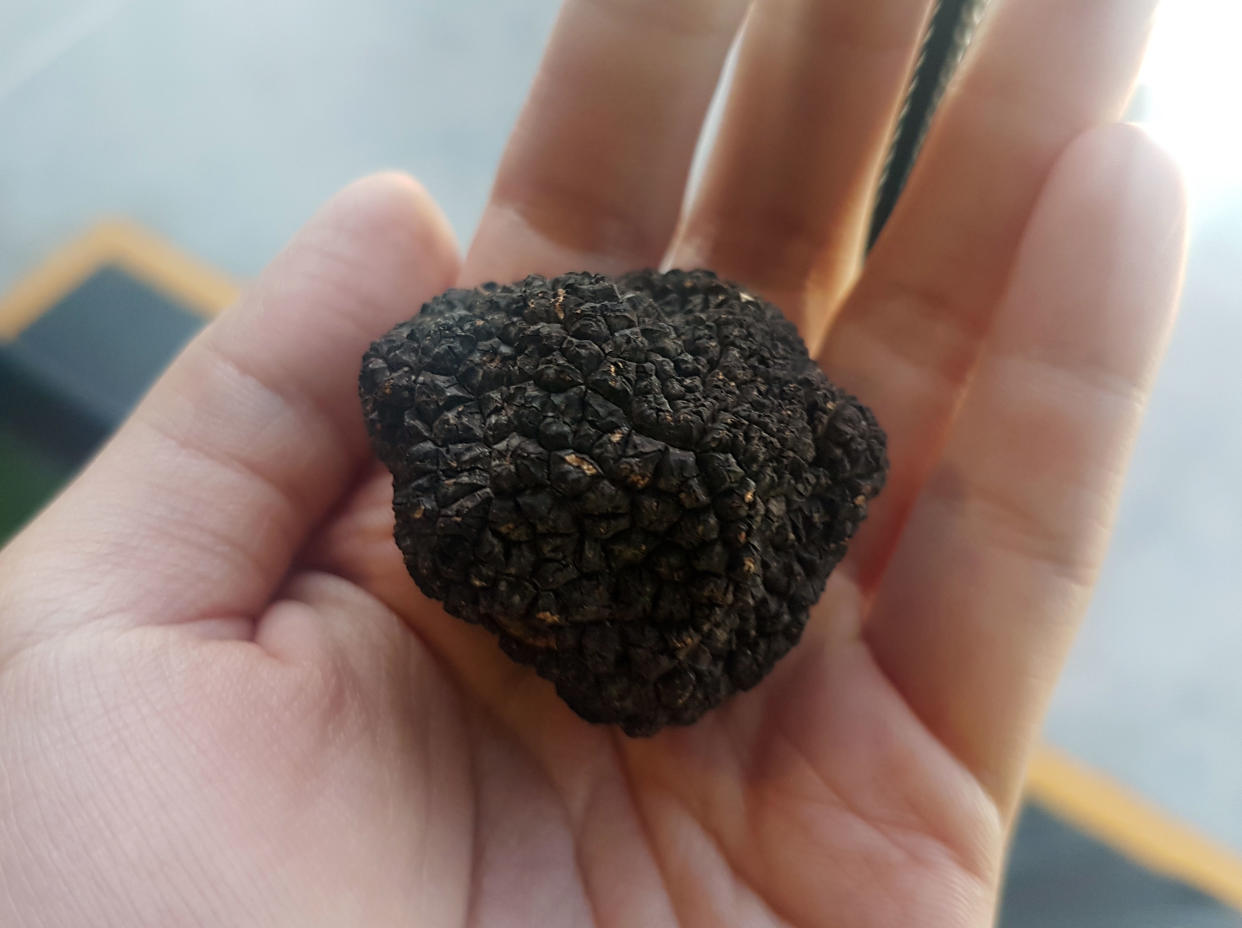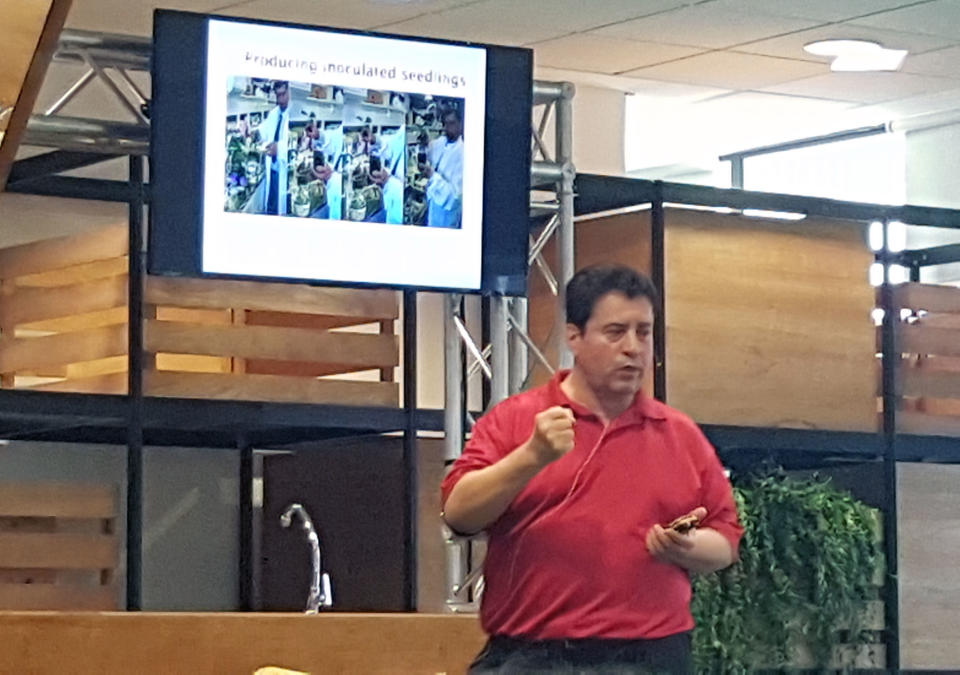Can truffles be grown in Singapore? Yes, says one expert

Thanks to tree seedlings injected with truffle spores that are already planted in our native soil, foodies here can rejoice at the prospect of eating home-grown versions of the well-loved fungus. The catch, however, is that it may be five to six years before the trees bear results – if they do at all.
This was what truffle expert Dr Salem Shamekh said during a talk at the Community Gardening Festival, a National Parks Board (NParks) event held at HortPark, on Sunday (5 November).
Speaking to more than 150 people about growing truffles as a home crop, Dr Shamekh – the Finnish director of the Juva Truffle Centre in Finland – also revealed that local experiments are currently being conducted in this area.
In what is known to be the first attempt to grow truffles locally, Dr Shamekh said that the 17 truffle spore-injected seedlings planted in a local research facility some four months ago were growing “like healthy children”. He added that growing truffles is as easy as growing tomatoes under the right conditions.
Truffles are a kind of fungi grown underground on the roots of trees in various parts of Europe. These are foraged by specially trained dogs that can detect their scent. Truffles are a delicacy touted to be of the world’s most expensive foods: a pound of white truffle can fetch more than US$3,000 (S$4,100). The value of truffles comes from the rarity of their most prized species and their ability to thrive only in conditions that are wet, cold and in soil with a high pH value.
However, farmers hailing from countries with different conditions have also managed to farm the fungus, which resembles a hard black or brown knob with an earthy aroma. Just two months ago, researchers at Chiang Mai University in Thailand identified two new species of truffle in a national park surrounding Mount Suthep in north-western Thailand.

Speaking to Yahoo Lifestyle Singapore, Dr Shamekh said that there is a possibility that the spore-injected tree seedlings could bear results in Singapore, although he cautioned that the experiment was still in its preliminary stages. The planted seedlings are currently being cared for by the NParks.
Much of the project’s success depends on the management of the seedlings and whether they can retain the truffle mycelium needed for them to bear the precious load. It is possible for the seedlings to grow but not bear truffles, stressed the 50-year-old expert.
The experiment in Singapore began sometime in June after Dr Shamekh brought in 17 year-old oak saplings in two batches from Finland and Qatar, inoculated the seedling roots with truffle spores, and planted them here. Spores from the summer and autumn truffle species were used.
“We treat every country as unique. We need to optimise the truffle cultivation techniques parameters to fit the country climate and soil type as we have done in Finland and Qatar, and that is what we are doing currently in Singapore to find the right technique for growing truffles in Singapore,” said Dr Shamekh.
His research centre in Finland has seen 33 truffle farms set up since they successfully inoculated tree seedlings in various places. More importantly, the truffles have survived sub-zero winter temperatures in Finland. Truffles have also been known to grow in Qatar’s desert conditions, where temperatures can soar as high as 50 deg C.
“Many people in the beginning thought it was a joke, or a stupid idea or a strange idea,” said Dr Shamekh, recalling the time when he wanted to introduce truffle-growing to Finland. He expressed hope that the plants in Singapore would be able to produce results in five to six years’ time and that the inoculated seedlings will be made available next year.
When asked by an audience member whether it is possible to grow truffle in pots, the expert said he did not rule it out. White truffle, the tuber borchii, has been known to grow in pots in Italy.
“Singapore can be a producer of seedlings in the region, that’s what we are doing now in Qatar… The seedlings produced in Qatar, a bulk of it will be for Qatar and the rest for export. I think it will be the same as Singapore. “If you produce it here in Singapore, I think it will be good for Malaysia and Indonesia,” he said.
Related stories:
Miss Universe Malaysia’s national costume for this year was inspired by Nasi Lemak
Thai eatery pays homage by serving dishes from defunct heritage vegetarian restaurant
Follow Yahoo Lifestyle Singapore on Facebook.



